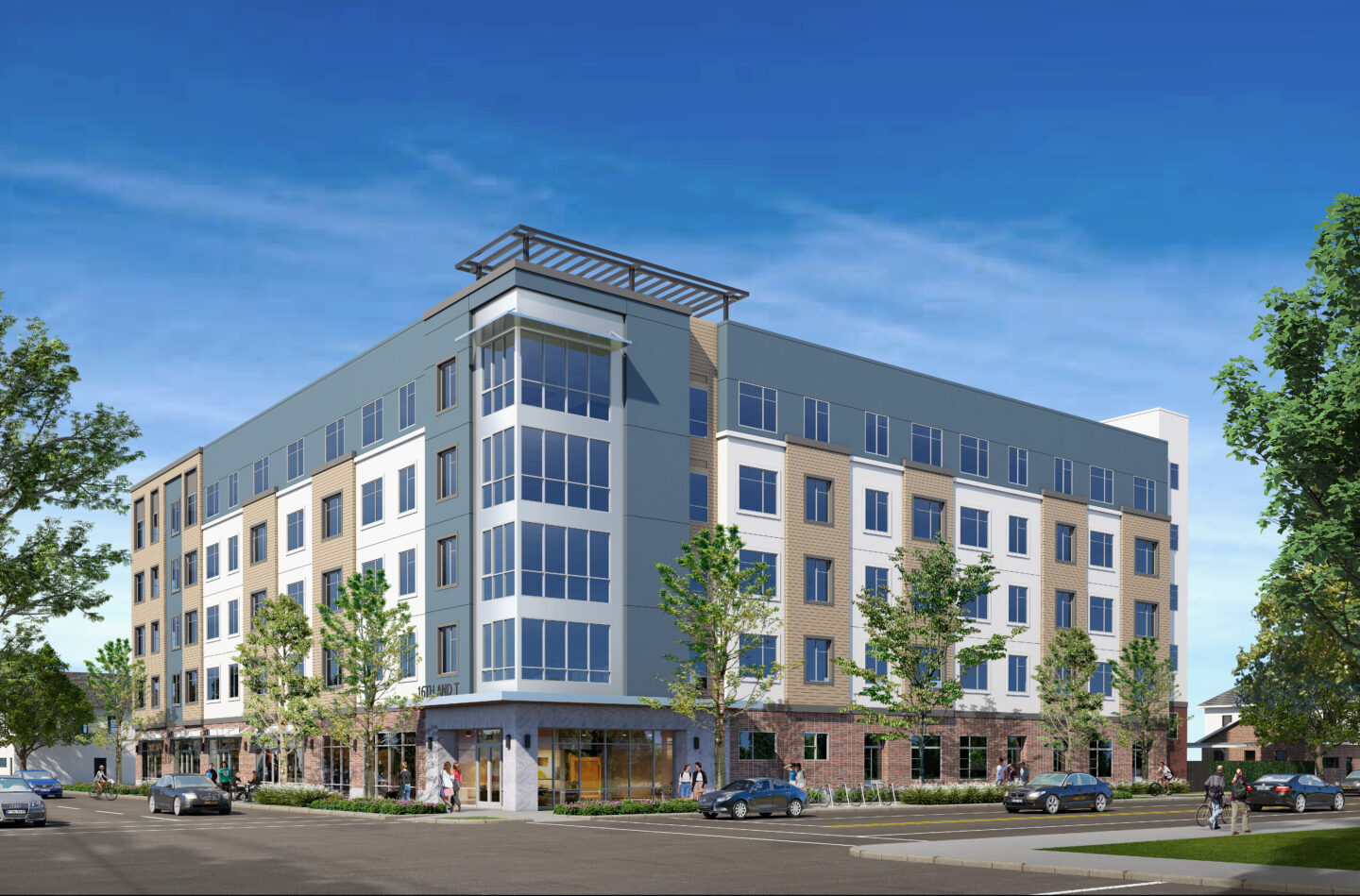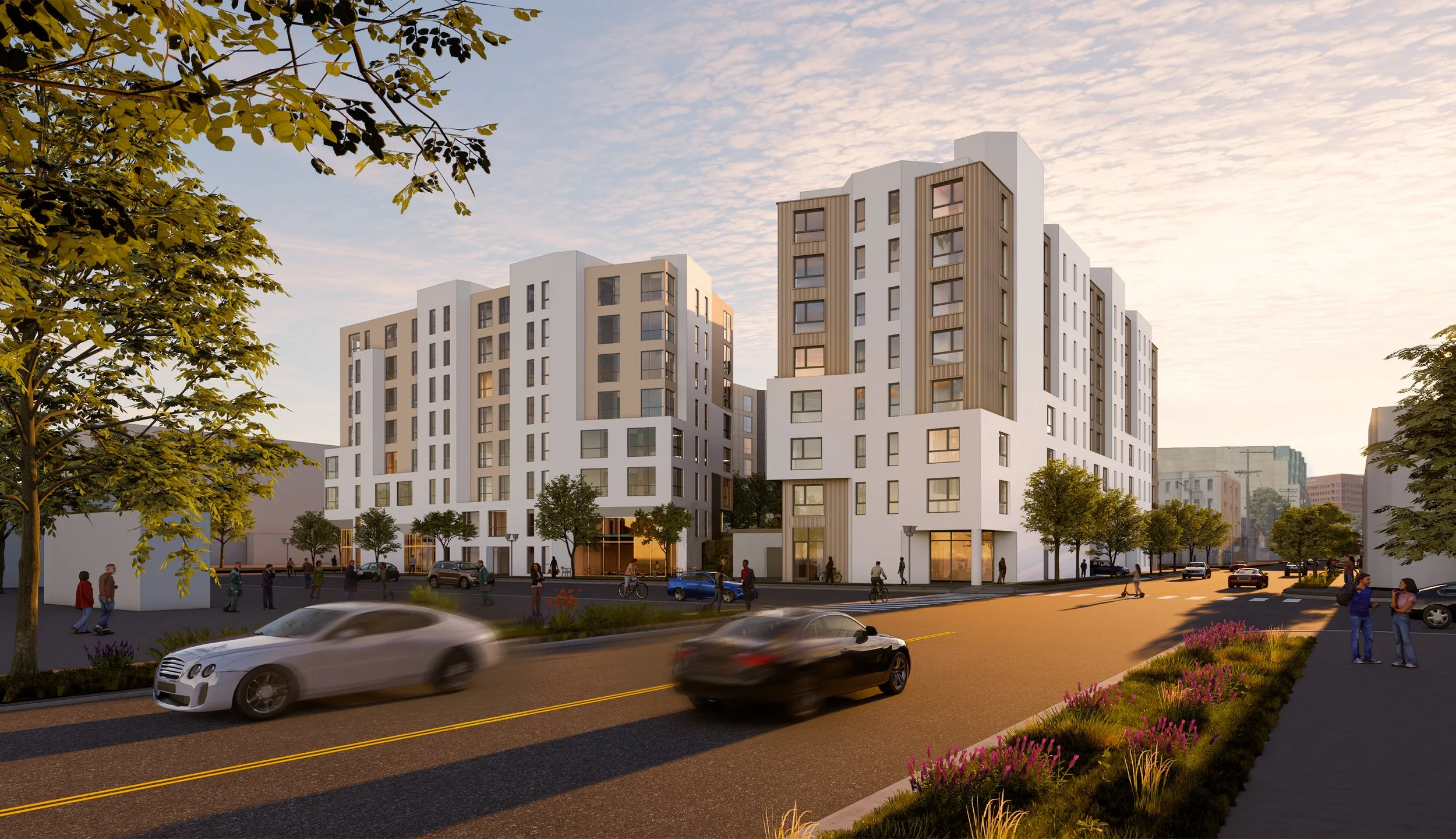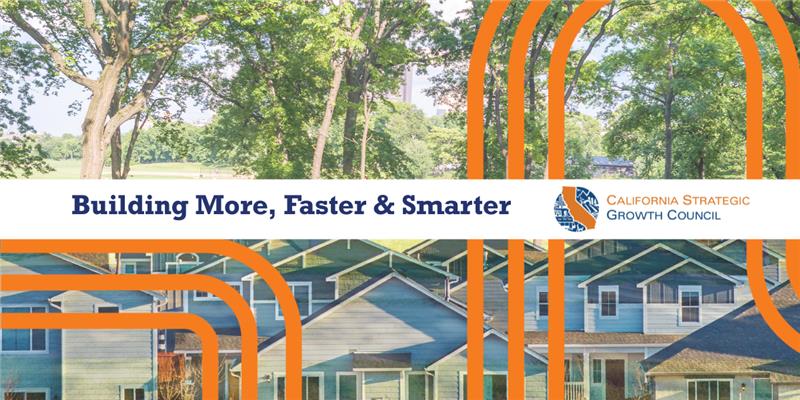What you need to know: The California Strategic Growth Council (SGC) continues to advance Governor Newsom’s Build More, Faster agenda by investing in projects that deliver affordable homes, resilient infrastructure, and climate-smart communities across the state.
SACRAMENTO—From shaded plazas and salmon streams to family housing and transit corridors, the California Strategic Growth Council (SGC) continues to advance Gov. Gavin Newsom’s call to build more, faster and smarter — accelerating projects that deliver homes, infrastructure and climate resilience in ways that strengthen the communities they serve.
Through its portfolio of programs, SGC is helping California create more housing in the right places — infill neighborhoods near transit, jobs and schools — while cutting harmful emissions, improving mobility and ensuring affordability remains central to growth.
These investments align with the Governor’s “Build More Housing, Faster” and “Climate-Safe Communities” initiatives, demonstrating how the state can meet ambitious housing and climate goals without compromising the character, culture or environmental health of local communities.
Across every region, SGC programs are delivering real impact: revitalized downtowns, affordable homes, resilient infrastructure and empowered local partnerships that put people at the center of California’s climate future.
“California is showing that we don’t have to choose between climate action and housing — we can do both, and we can do it better,” said SGC Executive Director Erin Curtis. “By investing in infill, transit-connected neighborhoods, we’re creating the blueprint for communities that are affordable, sustainable and built to last.”
Recent Investments in Climate-Smart Communities

Fresno’s Mariposa Plaza: A Gathering Place Reimagined
In Fresno, a historic downtown plaza is being reactivated through SGC’s Transformative Climate Communities (TCC) program, building on the impact of another Fresno TCC project that was recognized by U.S. EPA as transformative brownfields redevelopment.
The Mariposa Plaza Activation Project refreshes one of the city’s most significant public spaces — linking it to the future High-Speed Rail station while integrating climate-smart design features such as permeable pavement, a rainwater capture pavilion, and shaded seating for community gatherings and public events.
- Total Award: $3,859,000
- Key Elements Built:
- Permeable pavement
- Rainwater capture pavilion (shade structure with interpretive aids)
- Overhead shade canopy
- Benches and furnishings
- Lighting and irrigation system
- Trees planted: 12
- Shrubs planted: Not specified (multiple)
Focus: Climate-smart downtown revitalization and public gathering space
Affordable Housing and Sustainable Communities: Climate Action at Home
Across California, SGC’s Affordable Housing and Sustainable Communities (AHSC) program is proving that climate action starts where people live.
In Sacramento, the Sakura Project will create 134 all-electric affordable homes alongside transit upgrades — from safer sidewalks and ADA improvements to a new light-rail station and zero-emission train investments.
In San Bernardino, Alder Square / Arrowhead Grove will add 92 sustainable, mixed-income units with solar energy, electric vehicle (EV) charging, and green infrastructure — all designed through ongoing community engagement.
And in Los Angeles, the Alveare Parkview groundbreaking marks the first phase of a mixed-income community built on state excess land, fast-tracked under Gov. Newsom’s Executive Order N-19-06.
Together, these developments create homes, jobs and safer streets — demonstrating that sustainability and affordability go hand-in-hand. Administered by SGC and implemented by the California Department of Housing and Community Development, AHSC is part of California Climate Investments, a statewide program that puts billions of Cap-and-Invest (formally Cap-and-Trade) dollars to work reducing greenhouse gas emissions, strengthening the economy, and improving public health and the environment – particularly in disadvantaged communities.

Sakura Project – Sacramento
Focus: Infill, all-electric housing with mobility, workforce and transit integration
- Funding: $38.3 million
- Units Built: 134 affordable homes (studios and one-bedrooms for households earning between 30% and 60% of the typical income for their area).
- Additional Investments:
- $5 million for Zero-Emission Multiple Unit (ZEMU) rail car
- New Midtown Rail Station and multiple transit/safety improvements
- Upgrades at five bus stops and the Broadway Light Rail Station
- Three years of free transit passes and high-speed Wi-Fi for residents

Sunnydale HOPE SF – San Francisco
Focus: Long-term, mixed-income redevelopment for housing stability and mobility
Funding: $50.2 million (multiple blocks)
- Units Built:
- Total development: ~1,770 homes (975 affordable, 694 market rate)
- Current phase: 80 affordable units
- Infrastructure Additions:
- Class I & IV bike paths
- Crosswalks and playground
- Monthly transit passes for residents (three years)

Alder Square / Arrowhead Grove – San Bernardino
Focus: Affordable housing with community-driven design and green infrastructure
- Funding: $15.8 million
- Units Built: 92 affordable and mixed-income units
- Sustainability Features:
- Solar-covered parking and EV charging
- Xeriscape landscaping, permeable materials, bioswale
- Tree canopy, community gardens, village green

Alveare Parkview – Los Angeles
Focus: Infill housing built on state excess land, expedited under Executive Order N-19-06
- Funding: $35.3 million
- Units Built: 105 affordable family units (Phase 1 of 3-phase development)
- Infrastructure Additions:
- Traffic calming, bicycle network upgrades, pedestrian improvements
- Purchase of a new Metro rail car
Conserving Farmland
As these affordable, sustainable communities are built, the SALC Program works in tandem to fight climate change by protecting our productive farmlands and encouraging compact transit-oriented communities.
SGC’s AHSC program works together with its subprogram, the Sustainable Agricultural Lands Conservation (SALC) Program, to ensure that California is building affordable new homes quickly, in the right places, while protecting open spaces and working agricultural lands at risk of development.
At SGC’s Oct. 8 meeting in Eureka, the council awarded more than $128 million to permanently protect more than 40,000 acres of croplands and rangelands across 24 counties, with more than 11,000 acres being returned to California Native American Tribes for cultural and traditional agricultural uses.
These Round 10 investments will fund 52 projects: 48 acquisition grants—39 of which will be for agricultural conservation easements—and four planning grants. Once completed, acquisition investments from Round 10 will permanently protect tens of thousands of acres and reduce greenhouse gas emissions by an estimated 3,332,497 metric tons of carbon dioxide equivalent, which amounts to taking 777,322 gasoline-powered vehicles off the road for one year.
SALC will continue with Round 10 awards at the December SGC Council Meeting, recommending capacity and project development projects for awards.
Building Tribal Capacity
Through the new Tribal Capacity Building Pilot Program (TCBP), SGC is partnering with Tribes statewide to strengthen Sovereignty and climate readiness. The program provides funding and technical assistance to California Native American Tribes, enhancing their staff capacity to advance climate-related work. Ultimately, the goal of the Pilot Program is to help Tribes develop long-term capacity to secure funding and implement Tribal-led climate solutions.
Grantees statewide have already embarked on their efforts:
- In Monterey County, the Esselen Tribe is blending cultural burning and native plant propagation to steward ancestral lands.
- In Redding, the Winnemem Wintu Tribe is building an eco-village and restoring salmon runs — reconnecting community, housing and ecological restoration.
- In Rancho Cucamonga, Tribal grantees are strengthening peer learning relationships.
A total of $1.45 million has been awarded thus far, supporting efforts to advance housing, workforce and environmental goals while supporting long-term capacity for self-determined climate leadership.
Learning, Connecting, and Growing Together
The SGC’s work extends beyond projects and initiatives — it’s about partnerships. Convenings like the Regional Climate Collaboratives Annual Meeting, Tribal Peer Learning Sessions and regional Catalyst Convenings bring together local leaders, nonprofits and public agencies to share ideas, build capacity and accelerate progress in ways tailored to local communities’ needs.
“What’s powerful about these investments is how they connect,” said Curtis. “Each project, each partnership, is part of a bigger story — one where every community, Tribal, rural or urban, has a role in shaping a climate-safe California.”
Together with state, Tribal and local partners, these investments are helping communities thrive today and prepare for generations to come.
About the California Strategic Growth Council
The SGC is made up of state leadership and members of the public representing California’s most vital sectors — from housing and transportation to natural resources, health, and environmental protection.
The Council is chaired by Samuel Assefa, Director of the Governor’s Office of Land Use and Climate Innovation, and vice-chaired by Karen Ross, Secretary of the California Department of Food and Agriculture.
Other Council members include Wade Crowfoot, Secretary of the California Natural Resources Agency; Yana Garcia, Secretary of the California Environmental Protection Agency; Toks Omishakin, Secretary of the California State Transportation Agency; and Mark Ghaly, Secretary of the California Health and Human Services Agency.
In addition to state agency leadership, the Council includes three public members appointed by state leaders: Juan Sánchez Muñoz, appointed by the Governor; Frank C. Cárdenas, appointed by the Assembly; and Nicole Capretz, appointed by the Senate.
Together, these members bring expertise spanning climate resilience, housing, transportation, environmental justice, agriculture, public health, and community development — ensuring that SGC’s work reflects its residents, especially those marginalized and underserved.
The SGC helps communities identify and fund the projects that will make the state’s long-range goals a reality. Together, SGC and its members connect all levels of government with the communities they serve, future plans with present action, and technical expertise with lived experience.
